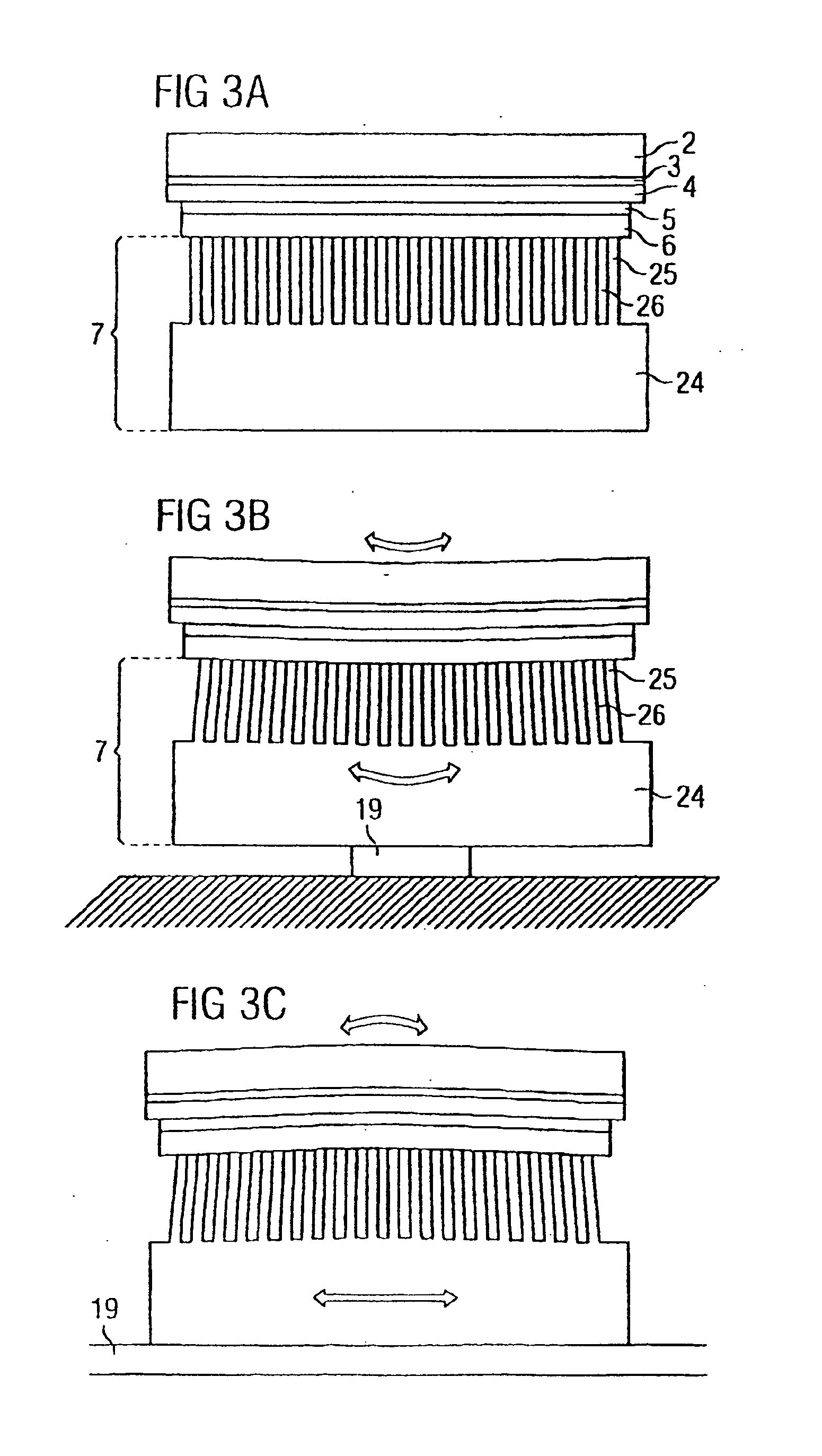Semiconductor component
a technology of semiconductor layers and components, applied in the direction of semiconductor devices, semiconductor/solid-state device details, electrical devices, etc., can solve the problems of component failure, thermal stress between the relatively sensitive semiconductor layer and the carrier body, and component sensitivity to changing temperatures during production process and operation
- Summary
- Abstract
- Description
- Claims
- Application Information
AI Technical Summary
Benefits of technology
Problems solved by technology
Method used
Image
Examples
Embodiment Construction
[0051] Identical or identically acting elements are provided with the same reference symbols in the figures. In particular the thickness of the layers is not illustrated to scale in the figures in order to afford a better understanding.
[0052] The semiconductor component illustrated in FIG. 1 has a semiconductor layer 2 arranged between a contact location 8 and a contact layer 3. The contact layer 3 may also be formed as an interrupted and / or patterned layer having a plurality of circular areas, by way of example. By way of example, the semiconductor layer 2 contains GaN and the contacts 3, 8 contain platinum, palladium or aluminum. The contact layer 3 (less than approximately 5 nm thick) lies on a reflection layer 4 (approximately 100 nm thick), which is very important for the light efficiency particularly in the case of optoelectronic applications. Depending on the light wavelength, the reflection layer 4 may comprise for example gold for the red spectral region or silver and alum...
PUM
 Login to View More
Login to View More Abstract
Description
Claims
Application Information
 Login to View More
Login to View More - R&D
- Intellectual Property
- Life Sciences
- Materials
- Tech Scout
- Unparalleled Data Quality
- Higher Quality Content
- 60% Fewer Hallucinations
Browse by: Latest US Patents, China's latest patents, Technical Efficacy Thesaurus, Application Domain, Technology Topic, Popular Technical Reports.
© 2025 PatSnap. All rights reserved.Legal|Privacy policy|Modern Slavery Act Transparency Statement|Sitemap|About US| Contact US: help@patsnap.com



